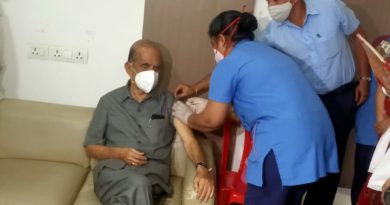Diabetes and Hypertension by Dr Pradeep Gadge, A leading Diabetologist, Gadge Diabetes Centre
Diabetes and hypertension or high blood pressure go hand in hand. Many people with diabetes also have hypertension. Having these conditions together can make them both worse. Many a times people having high blood pressure usually has no signs or symptoms and many people are not aware they have it.
At least 1 in 3 patients with diabetes also have hypertension.When hypertension and diabetes co-exist, the effects of one disease tend to make the other worse.Hypertension and diabetes generally coexist because they share similar risk factors, including being overweight, following an unhealthy diet, and living an inactive lifestyle. About 25% of people with Type 1 diabetes and 80% of people with Type 2 diabetes have high blood pressure.
Having diabetes raises your risk of heart disease, stroke, kidney disease and other health problems. Having high blood pressure also raises this risk. If you have diabetes and high blood pressure together, this raises your risk of health problems even more.
The noncommunicable diseases Risk Factor Collaboration (NCD-RisC) estimates suggest that between 1980 and 2014, the age-standardized diabetes and hypertension prevalence among men in India grew from 3.7% to 9.1% and 24.5% to 26.6%, respectively, and among women from 4.6% to 8.3% and 22.7% to 24.7%, respectively.The prevalence of both conditions is likely to continue increasing in the future given that India’s population is aging and urbanizing rapidly and standards of living in the country are improving, which tends to be accompanied by an increase in obesity and its associated cardiovascular disease (CVD) risk factors, including diabetes and hypertension. According to study published in Journal of the American Medical Association (JAMA) in 2018, the rate of diabetes in India is over six percent; while around one-quarter of people have high blood pressure. The rates of high blood pressure and diabetes were particularly high amongst middle-aged and elderly people.According to the report, diabetes prevalence in India was about 6.1 percent among women and 6.5 percent among men; on the other hand, for hypertension it was 20 percent among women and 24.5 percent among men.The researchers also report a considerably higher prevalence of hypertension among young adults, as high as 12.1 per cent among those aged 18-25 years than the World Health Organization (WHO) had estimated for India and, in fact, any other region in the world. As much as 20 per cent among women and 24.5 per cent among men were found to be affected by hypertension.
The prevalence of high blood pressure in people with diabetes depends on type and duration of diabetes, age, sex, BMI, history of glycemic control, and the presence of kidney disease, among other factors.Most patients with diabetes and hypertension should be treated to a systolic blood pressure goal of <140 mmHg and a diastolic blood pressure goal of <90 mmHg. For patients with systolic blood pressure >120 mmHg or diastolic blood pressure >80 mmHg, lifestyle intervention consists of weight loss if overweight or obese; a Dietary Approaches to Stop Hypertension (DASH)-style dietary pattern including reduced sodium and increased potassium intake; increased fruit and vegetable consumption; moderation of alcohol intake; and increased physical activity.
Blood pressure should be measured at every routine follow up visit with the doctor. All hypertensive patients with diabetes should also have home blood pressure monitored to identify white-coat hypertension.
Lifestyle factors are the best way to lower the risk of high blood pressure and to maintain normal blood sugar levels. People can control hypertension with healthy lifestyle habits. These can include exercise and a low-fat, low-sodium diet. If necessary, a person with hypertension may reduce their blood pressure using medication.




